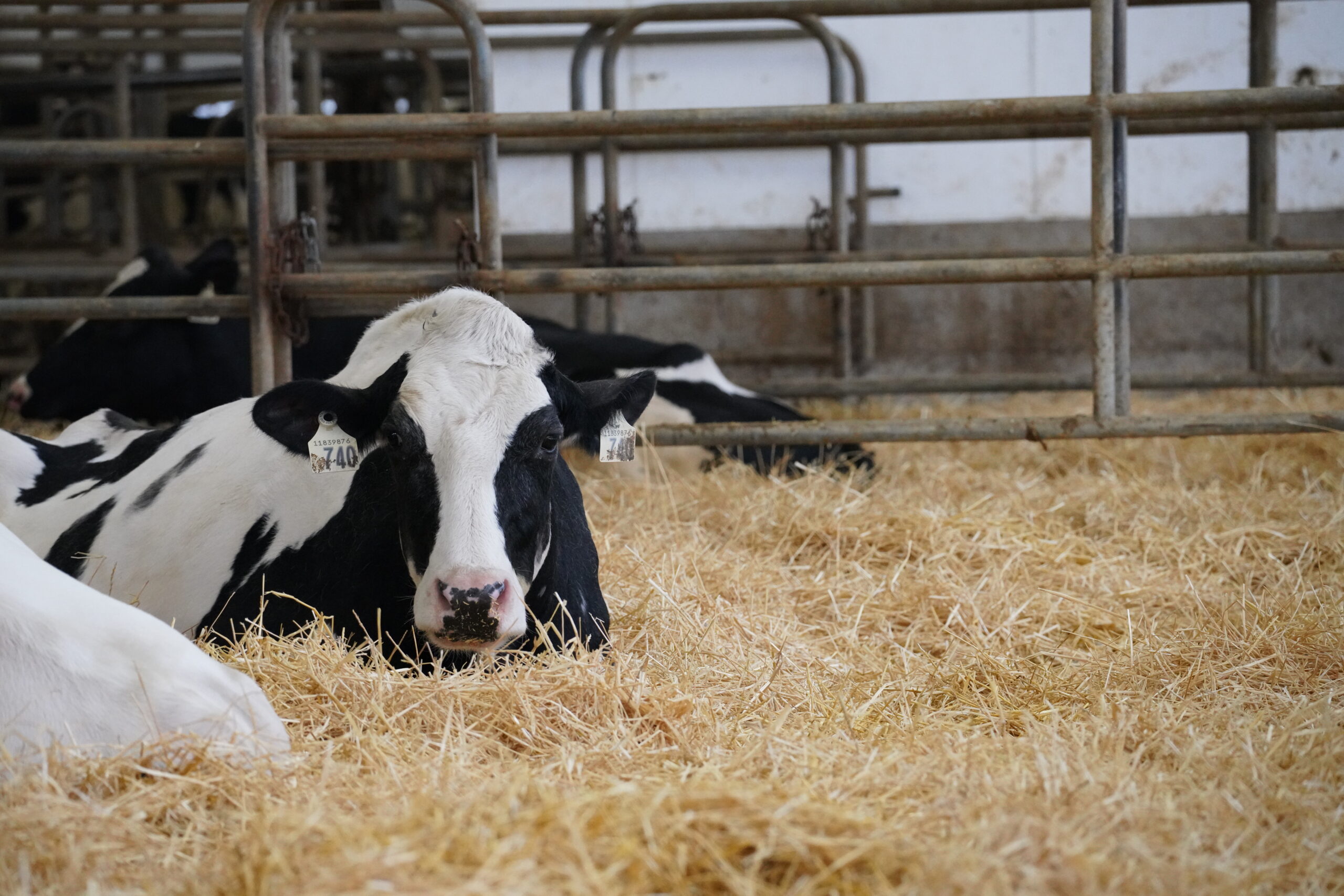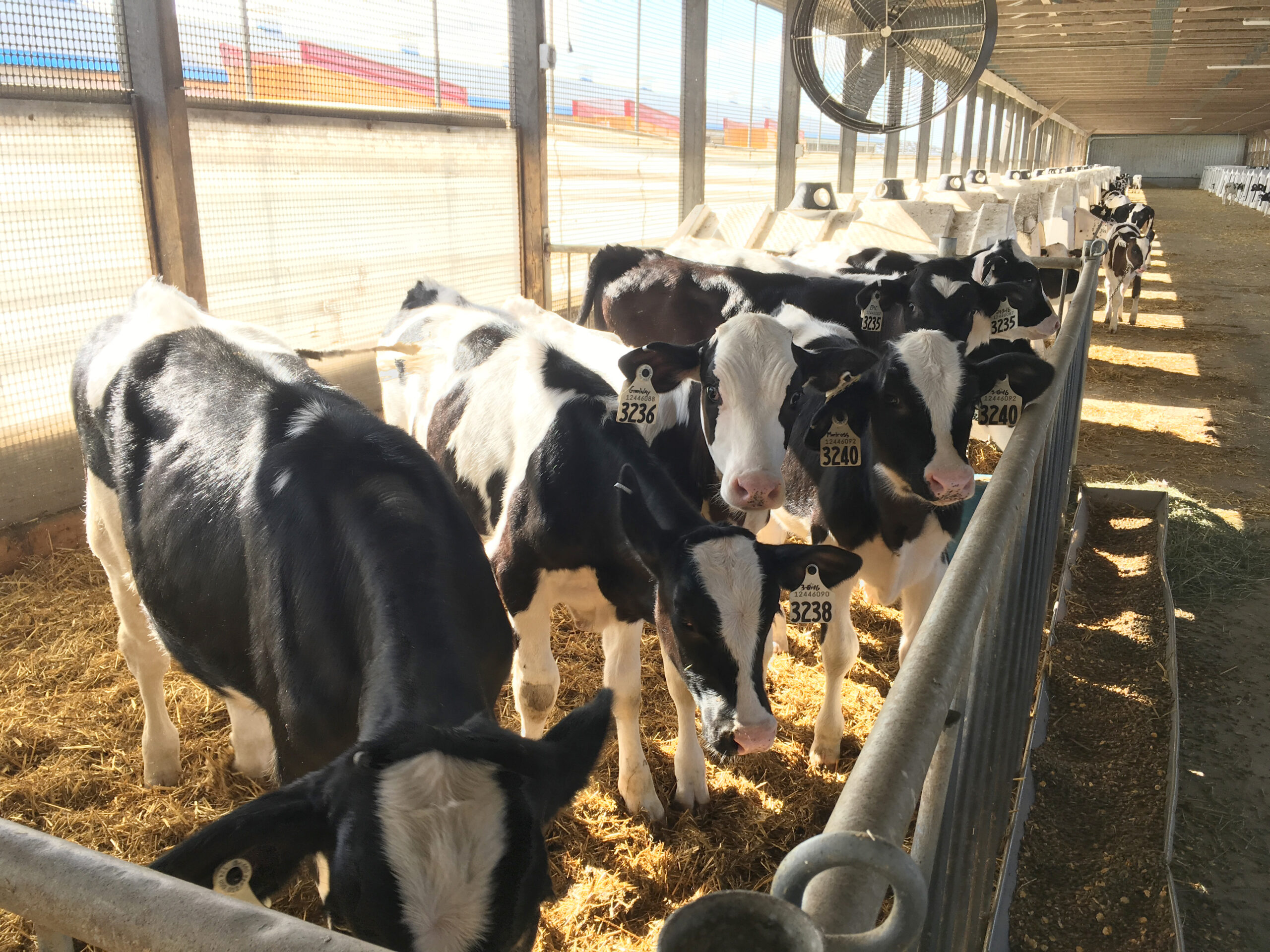Housing for Newly Weaned Heifers: How and Why? – Part 2
- April 30, 2020
Types of Housing
Tie Stall Housing: Although this is not the best option, stall dimensions must allow for sufficient space for the animals to move freely. The lying surface must be soft and non-abrasive, and the use of bedding is always recommended.
Free Stall Housing: The use of stalls is not recommended for heifers below 6 months old. Ensure that the stall dimensions are adapted to the largest animals in the group. Avoid having steps that are too high between the alley and the lying surface. The suggested maximum height is 15 to 20 cm (6 to 8 inches) to facilitate access to the stalls.
Bedded Pack Loose Housing: Bedded pack housing should be designed to allow animals to have enough lying space and to remain dry. It is important to ensure that there is enough space at the feed bunk according to the animal dimensions. Plan to clean the pens with the help of specialized equipment. A feed alley can be useful for maintaining hygiene in the pen and can help to isolate animals with barriers when the bedded area is being cleaned.
Grouping
From weaning to six months of age, it is preferable to make smaller groups to reduce competition. The size difference between animals should not be greater than 45 kg or two months of age. Groups of less than 10 animals are preferable.
Even after six months variation in animal size should still be minimized, especially when using stalls. A maximum difference of 100 kg between the smallest and the largest heifers should be the guide for the group or the stalls may not be adapted to the size of the animal. This is usually about a 4-month age difference.
Feed Bunk
The feed bunk should be designed to have enough space for all of the animals to eat at the same time, especially when concentrates are fed separately. When feeding a TMR, there must be enough space to discourage competition. The height of the curb is usually 1/3 of the hip height. The curb should be as slim as possible to optimize feed access. The bottom of the feed bunk should be raised by 10 to 15 cm (4-6 inches).
Water
Water must be available at all times. For group housing, there should ideally be at least two water stations to reduce competition. The suggested length should be 5 to 9 cm (2 to 3.5 inches) per head, according to the size of the animals. The height of the waterer should be adapted to the animals, around ½ of their hip height.
Ventilation
The volume of air in a livestock building has a significant impact on the respiratory health of the animals it holds. The target should be a building volume of at least 17 m3 (600 ft3) per animal. In winter, this will allow for 4 air changes per hour, or at least 15 ft3 per minute/head for good quality ventilation. In summer, you need to have 60 air changes or at least 100 ft3 per minute/head. Furthermore, providing some air movement at 4-5 km/h (250 ft/min) can help the animals to cool off during periods of heat stress.
Several types of ventilation can be installed depending on the configuration of the building but ventilation objectives remain the same regardless of the system used.
These are a few tips that can help you to set up a building so that the critical points can be controlled. Discuss it with your advisor!
Estimated Housing Measurements according to Animal Size-Holstein (metric)
Body Weight (kg) | 100 | 150 | 200 | 300 | 400 | 500 | 600 | 700 |
Age- Holstein* (months) | 2 | 4 | 6 | 10 | 14 | 18 | 22 | 24 |
1Straw Bedded Lying Surface (m2) | 3.0 | 3.5 | 3.5 | 4.5 | 5.5 | 6.5 | 7.5 | 11.0 |
2Length of Stall Lying Surface (cm) | 115 | 125 | 140 | 155 | 165 | 170 | 175 | 180 |
3Minimum Stall Width- Holstein (cm) | 70 | 75 | 80 | 90 | 100 | 110 | 120 | 125 |
4Minimum Space at the Feed Bunk (cm/head) | 35 | 40 | 45 | 48 | 50 | 60 | 65 | 75 |
4Feed Bunk Curb Height (cm) | 32 | 35 | 40 | 42 | 45 | 47 | 48 | 50 |
4Space at the waterer (cm/head) | 5 | 5 | 6 | 8 | 9 | 9 | 9 | 9 |
4Average height of waterer (cm) | 48 | 52 | 58 | 64 | 68 | 71 | 73 | 75 |
*According to the 2014 Lactanet growth chart
1Adapted from Graves, 2008, University of Pennsylvanie
2Adapted from Anderson, 2014, OMAFRA, according to the 2014 Valacta growth chart
3Adapted from CRAAQ, 2008
4Adapted from Dairyland Initiative, University of Wisconsin
Estimated Housing Measurements according to Animal Size-Holstein (imperial)
| Body Weight (kg/lbs) |
100 220 |
150 330 |
200 440 |
300 660 |
400 880 |
500 1100 |
600 1320 |
700 1540 |
| Age- Holstein* (months) |
2 |
4 |
6 |
10 |
14 |
18 |
22 |
24 |
| 1Straw Bedded Lying Surface (ft2) |
32 |
40 |
40 |
50 |
60 |
70 |
80 |
120 |
| 2Length of Stall Lying Surface (in.) |
45 |
50 |
55 |
60 |
65 |
67 |
69 |
71 |
| 3Minimum Stall Width- Holstein (in.) |
28 |
30 |
32 |
36 |
40 |
43 |
47 |
49 |
| 4Minimum Space at the Feed Bunk (in/head) |
14 |
16 |
18 |
19 |
20 |
24 |
26 |
30 |
| 4Feed Bunk Curb Height (in.) |
12 |
14 |
16 |
17 |
18 |
19 |
19 |
20 |
*According to the 2014 Lactanet growth chart
1Adapted from Graves, 2008, University of Pennsylvanie
2Adapted from Anderson, 2014, OMAFRA, according to the 2014 Valacta growth chart
3Adapted from CRAAQ, 2008
4Adapted from Dairyland Initiative, University of Wisconsin











